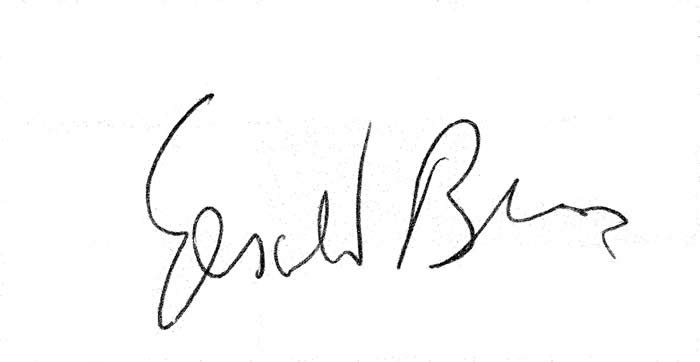
THE HOUND OF THE ELSINORES
"He is silent and distrait."
"I confess that I covet your skull."
"It is melancholy outside and in."
Arthur Conan Doyle saw Henry Irving's Hamlet at the Royal Lyceum Theatre, on his first trip to London. He was fifteen, and impressionable. Years later on the same stage Irving performed a one-acter by Conan Doyle, and William Gillette made his first appearance as Sherlock Holmes. Mary Morstan, Holmes and Watson set out from its pillared portico on a ride to Thaddeus Sholto's house in The Sign of Four. If the theater is a landmark for Doyle, Hamlet is something more -- not the play as a literary object, but the effect of it as performed, the shadowed stage and Irving's black-clad, skull-toting, melancholy Prince. The atmosphere is the play, and in Doyle's imagination Henry Baskerville, "pale and distrait," becomes something like Hamlet.
But only like. Something is rotten in Dartmoor, to be sure, and Grimpen is twice described as a "hamlet." At the end of a long, dark drive Baskerville Hall glimmers "like a ghost"; at the end of the novel Sherlock Holmes says, "We've laid the family ghost once and forever." The Hall with its "ancient, crenellated" towers recalls the first scene of the play, and its dining-room with its "shadow and gloom" is a stage set we've seen:
It was a long chamber with a step separating the dais where the family sat
from the lower portion reserved for their dependents. At the one end a
minstrel's gallery overlooked it. Black beams shot across above our heads,
with a smoke-darkened ceiling beyond them. With rows of flaring torches to
light it up, and the colour and rude hilarity of an old-time banquet, it might
have softened; but now, when two black-clothed gentlemen sat in the little
circle of light thrown by a shaded lamp, one's voice became hushed and
one's spirit subdued. A dim line of ancestors . . . stared down upon us and
daunted us by their silent company.
Watson and his host could have done with a Yorick to entertain him, but alas. Shakespeare's defunct jester shrinks in the story to six uses of the word "skull"; Dr. James Mortimer is a Piltdown enthusiast. In his passion for craniometry he covets Holmes's.
There is no Scene One on the battlements, but at the train station on the way to the hall there are "two soldierly men in dark uniforms," ghosts of the play's Francisco and Barnardo, and no Prince as such (though the word itself occurs five times as "Princetown," Doyle's invented name for the real prison of Dartmoor.) But the young heir Henry Baskerville, "pale and distrait," haunted by a family curse, is at least a baronet. The men watch for Selden, an escaped murderer who escaped hanging "due to some doubts as to his complete sanity, so atrocious was his conduct." Madness is an issue in the novel. Henry's uncle Sir Charles, frightened to death by a hound, is described in the Devon County Chronicle as "of an eccentric habit of mind," subject to "acute attacks of nervous depression." When Sir Henry loses first one boot, then another in his London hotel it seems "the very maddest, queerest thing that ever happened to me." "The queerest perhaps ----" says Holmes, who already has a notion what game's afoot. Sir Henry thinks Stapleton a "crazy man" for throwing a fit (in a scene beautifully described by Watson, who sees it from a distance, as a dumb-show) on the moor. "Good heavens," says Watson to Holmes at one point, "are you mad?" as he dances laughing over the dead body of the convict.
The word "melancholy" appears nine times, along with nine instances of "tragic" or "tragedy." Sir Henry and Dr. Mortimer don't think of themselves as imaginative men. Yet Mortimer, who has seen the footprints of a gigantic hound by the body of Sir Charles, credits the account of the "crazed" roisterers as delivered in a manuscript dated 1742, and Holmes says drily, "I see that you have quite gone over to the supernaturalists." "I don't think that I am a coward, Watson," says Henry, "but that sound seemed to freeze my very blood." He has heard, at the start of their pursuit of Selden across the moor, the baying of a hound. His reaction may well remind us of Barnardo's "How now Horatio, you tremble and looke pale, Is not this somthing more than phantasie?" (Dr. Mortimer's attitude to the legend is Horatio's, "So have I heard and doe in part believe it.") Over and over in this novel the practical men are unhinged by the spectral. Their imagination is vulnerable because untrained. "It is the scientific use of the imagination," says Holmes, when Mortimer accuses him of guesswork, acting on a "material basis" -- a boot, the hint of perfume on a letter -- that puts him on the track of a material hound once he has "made up his mind as to which points were essential and which immaterial," with the aid of two pots of coffee and a pound of shag.